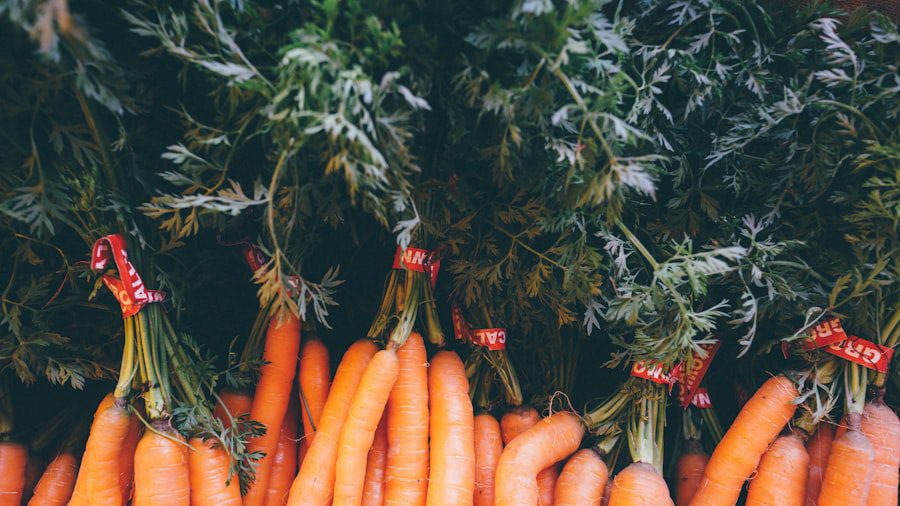Local farms and ranches serve as the backbone of agricultural production, providing fresh produce, dairy, and meats to communities. These establishments often prioritize sustainable practices, ensuring that their methods not only yield high-quality products but also protect the environment. For instance, many local farms engage in crop rotation and organic farming techniques, which enhance soil health and reduce the need for chemical fertilizers.
This commitment to sustainability not only benefits the land but also fosters a connection between consumers and the source of their food. By purchasing directly from local farms, consumers can enjoy seasonal produce that is harvested at its peak freshness, resulting in superior flavor and nutritional value. Moreover, local farms and ranches often offer unique products that are not typically found in conventional grocery stores.
For example, a small farm may specialize in heirloom varieties of vegetables or rare breeds of livestock, providing consumers with access to flavors and textures that are increasingly rare in mass-produced food systems. Many of these farms also engage in community-supported agriculture (CSA) programs, where consumers can subscribe to receive regular boxes of fresh produce throughout the growing season. This model not only supports local economies but also encourages consumers to explore new recipes and cooking techniques, as they receive a diverse array of seasonal ingredients.
Key Takeaways
- Local farms and ranches offer fresh and locally sourced produce and meats, supporting the community and promoting sustainable agriculture.
- Specialty grocery stores provide a wide range of unique and hard-to-find ingredients, catering to food enthusiasts and adventurous cooks.
- Farmers’ markets offer a vibrant and diverse selection of seasonal fruits, vegetables, and artisanal products, creating a direct connection between consumers and local producers.
- Online retailers provide convenience and accessibility to a variety of food products, allowing consumers to explore and purchase specialty items from the comfort of their homes.
- Exotic food stores offer a fascinating array of international ingredients and delicacies, allowing consumers to explore and experiment with new flavors and cuisines.
- Ostrich farms and breeders offer a unique and lean alternative to traditional meats, promoting sustainable and ethical farming practices.
- International food markets showcase a rich tapestry of global culinary traditions, offering a diverse selection of imported goods and authentic ingredients.
- Gourmet food stores curate a selection of high-quality and artisanal products, catering to discerning palates and culinary enthusiasts.
Specialty Grocery Stores
Specialty grocery stores have emerged as vital players in the food retail landscape, catering to consumers seeking unique and high-quality products that go beyond the offerings of traditional supermarkets. These stores often focus on specific categories such as organic foods, gourmet ingredients, or international cuisines. For instance, a specialty store might carry a wide selection of artisanal cheeses, locally sourced meats, and organic produce, appealing to health-conscious shoppers and food enthusiasts alike.
The curated nature of these stores allows them to provide products that are often difficult to find elsewhere, making them a go-to destination for culinary exploration. In addition to their diverse product offerings, specialty grocery stores frequently emphasize customer experience and education. Many of these establishments host tastings, cooking classes, or workshops that allow customers to engage with the products on a deeper level.
For example, a store specializing in international foods might offer classes on how to prepare traditional dishes from various cultures, thereby fostering a greater appreciation for global cuisines. This interactive approach not only enhances customer loyalty but also positions specialty grocery stores as community hubs where food lovers can gather to share their passion for cooking and eating.
Farmers’ Markets

Farmers’ markets have gained popularity as vibrant community spaces where local producers can sell their goods directly to consumers. These markets typically feature a diverse array of products, including fresh fruits and vegetables, baked goods, artisanal cheeses, and handmade crafts. The direct-to-consumer model allows farmers to receive fair prices for their products while fostering a sense of community among shoppers.
At a farmers’ market, consumers can interact with the growers themselves, learning about their farming practices and the stories behind their products. This personal connection enhances the shopping experience and encourages consumers to make informed choices about the food they purchase. The atmosphere at farmers’ markets is often lively and engaging, with live music, cooking demonstrations, and family-friendly activities creating a festive environment.
Many markets also prioritize sustainability by promoting organic farming practices and reducing food miles through local sourcing. For example, a farmers’ market might feature vendors who grow their produce within a 50-mile radius, ensuring that shoppers are supporting local agriculture while minimizing their carbon footprint. Additionally, farmers’ markets often accept various forms of payment, including SNAP benefits, making fresh produce accessible to a broader range of consumers.
Online Retailers
| Online Retailer | Number of Customers | Monthly Revenue | Conversion Rate |
|---|---|---|---|
| Retailer A | 10,000 | 500,000 | 5% |
| Retailer B | 15,000 | 750,000 | 4% |
| Retailer C | 8,000 | 400,000 | 6% |
The rise of online retailers has transformed the way consumers access food products, offering convenience and variety at their fingertips. E-commerce platforms dedicated to groceries allow shoppers to browse an extensive selection of items from the comfort of their homes. This shift has been particularly beneficial for those with limited access to physical grocery stores or those living in rural areas where options may be scarce.
Online retailers often partner with local farms and producers to deliver fresh produce and specialty items directly to consumers, ensuring that quality is maintained throughout the supply chain. In addition to convenience, online grocery shopping provides consumers with the opportunity to discover new products and brands that may not be available in their local stores. Many online platforms feature user reviews and ratings, helping shoppers make informed decisions about their purchases.
Furthermore, subscription services have gained traction in this space, allowing consumers to receive regular deliveries of curated items tailored to their preferences. For instance, a subscription box might focus on organic snacks or international delicacies, introducing customers to new flavors and culinary experiences each month.
Exotic Food Stores
Exotic food stores cater to adventurous eaters and those seeking ingredients from specific cultural cuisines that may not be readily available in mainstream grocery stores. These establishments often stock a wide range of products from around the world, including spices, sauces, grains, and snacks that reflect diverse culinary traditions. For example, an Asian grocery store might offer an extensive selection of rice varieties, fresh herbs like lemongrass and Thai basil, as well as specialty sauces such as hoisin or sriracha.
This variety allows home cooks to experiment with authentic recipes from different cultures. In addition to ingredients, exotic food stores often serve as cultural hubs within communities. They may host events such as cooking demonstrations or cultural festivals that celebrate the traditions associated with the foods they sell.
These gatherings provide opportunities for customers to learn about different cuisines while fostering connections among community members. Furthermore, many exotic food stores employ staff who are knowledgeable about the products they carry and can offer cooking tips or recipe suggestions based on customers’ needs.
Ostrich Farms and Breeders

Ostrich farms represent a unique niche within the agricultural sector, focusing on the breeding and raising of ostriches for their meat, feathers, and leather. Ostrich meat is known for being leaner than beef while offering a rich flavor profile that appeals to health-conscious consumers seeking alternative protein sources. The farming of ostriches has gained traction due to its lower environmental impact compared to traditional livestock farming; ostriches require less land and water while producing fewer greenhouse gas emissions.
In addition to meat production, ostrich farms often capitalize on other aspects of the bird’s anatomy. The feathers are highly sought after for use in fashion and decorative items, while ostrich leather is prized for its durability and unique texture in luxury goods such as handbags and shoes. Many ostrich farms also engage in educational outreach by offering tours or workshops that inform visitors about ostrich care and the benefits of incorporating ostrich products into their diets.
This multifaceted approach not only promotes sustainable farming practices but also raises awareness about the versatility of ostrich as a resource.
International Food Markets
International food markets provide a gateway for consumers to explore global cuisines without leaving their neighborhoods. These markets typically feature a diverse array of products from various countries, including spices, sauces, snacks, and beverages that reflect the culinary traditions of different cultures. For instance, a Middle Eastern market might offer an extensive selection of spices like sumac and za’atar alongside traditional sweets such as baklava or halva.
This variety allows consumers to experiment with new flavors and cooking techniques while broadening their culinary horizons. The atmosphere at international food markets is often vibrant and bustling, with vendors eager to share their knowledge about the products they sell. Many markets also include prepared food stalls where shoppers can sample authentic dishes from different regions.
This experiential aspect enhances the shopping experience by allowing customers to taste before they buy, fostering a deeper appreciation for the flavors associated with various cuisines. Additionally, international food markets often serve as community gathering spaces where cultural events or festivals are held, further enriching the local cultural landscape.
Gourmet Food Stores
Gourmet food stores specialize in high-end culinary products that cater to discerning palates seeking exceptional quality and unique flavors. These establishments often curate an impressive selection of artisanal cheeses, handcrafted chocolates, specialty oils and vinegars, and gourmet condiments that elevate everyday meals into extraordinary dining experiences. For example, a gourmet store might carry small-batch jams made from locally sourced fruits or rare truffle oils that add depth to dishes.
The emphasis on quality over quantity sets gourmet food stores apart from conventional grocery retailers. In addition to their product offerings, gourmet food stores frequently provide expert guidance through knowledgeable staff who can assist customers in selecting items based on their preferences or dietary needs. Many stores also host tastings or cooking classes that allow customers to engage with the products on a deeper level while learning new culinary skills.
This interactive approach not only enhances customer loyalty but also fosters a sense of community among food enthusiasts who share a passion for high-quality ingredients and innovative cooking techniques.
If you are interested in sustainable strategies for success, you may want to check out this article on green supply chain management solutions. This article discusses how businesses can implement environmentally friendly practices to improve their overall sustainability. Additionally, if you are looking to create sustainable fuel, you can read about how to make briquettes in this article: creating sustainable fuel – how to make briquettes. Lastly, if you are interested in boosting industrial energy efficiency in Afghanistan, you can find valuable information in this article: boosting industrial energy efficiency in Afghanistan.
FAQs
What are ostrich eggs?
Ostrich eggs are the largest eggs laid by any living bird species. They are typically around 6 inches in diameter and can weigh up to 3 pounds.
Where can you buy ostrich eggs?
Ostrich eggs can be purchased from specialty grocery stores, farmers’ markets, and online retailers. They are also available at some ostrich farms and wildlife parks.
Are ostrich eggs legal to buy?
In most countries, it is legal to buy and sell ostrich eggs. However, it is important to check local regulations and restrictions before purchasing ostrich eggs.
How much do ostrich eggs cost?
The cost of ostrich eggs can vary depending on the seller and the location. On average, ostrich eggs can range from $20 to $50 per egg.
Are ostrich eggs safe to eat?
Ostrich eggs are safe to eat and are considered a delicacy in many cultures. They are rich in protein and nutrients, and can be used in cooking and baking just like chicken eggs.
How do you store ostrich eggs?
Ostrich eggs should be stored in a cool, dry place away from direct sunlight. They can be kept at room temperature for up to a month, or refrigerated for up to 6 months.



